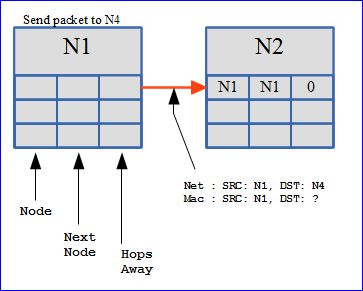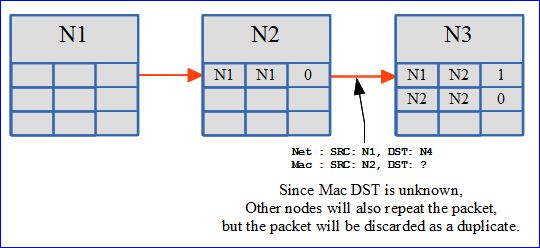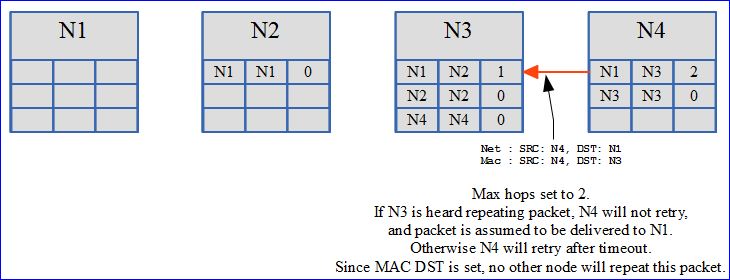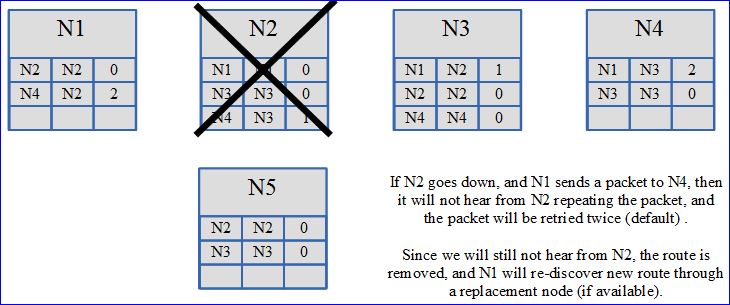Difference between revisions of "Low Powered Mesh Network stack"
From Embedded Systems Learning Academy
(→Example Mesh Network) |
|||
| Line 22: | Line 22: | ||
== Example Mesh Network == | == Example Mesh Network == | ||
| − | + | === Node Path Discovery === | |
| + | [[File:mesh_path_1.jpg|center|frame|N1 trying to send packet to N4]] | ||
| + | [[File:mesh_path_2.jpg|center|frame|N3 (intermediate node) repeating packet]] | ||
| + | [[File:mesh_path_3.jpg|center|frame|N4 receives packet, half routes discovered]] | ||
| + | |||
| + | === ACK Packet Path === | ||
| + | [[File:mesh_path_4.jpg|center|frame|N4 sending ACK, will ensure N3 repeats it]] | ||
| + | [[File:mesh_path_5.jpg|center|frame|N3 sending ACK, will ensure N2 repeats it]] | ||
| + | [[File:mesh_path_6.jpg|center|frame|N2 sending ACK, and hoping for the best :) ]] | ||
| + | |||
| + | === Route Updates === | ||
| + | [[File:mesh_path_7.jpg|center|frame|Path will be healed if N2 disappears]] | ||
Revision as of 16:31, 8 August 2013
This article is under construction, but it shows the design of low-powered mesh network.
Contents
Features
- Addressed network with auto-retries, and auto-acknowledge
- Minimal RAM/ROM footprint, with NO HEAP usage
- Each node can participate in the mesh network to deliver packets to a destined node.
- Each packet may dictate maximum hops it can take.
Detailed Features
- Each packet sent can use existing route, and if route has changed, a new route is automatically discovered using a special retry packet.
- Each node's ACK contains some piggy-back data about the node itself.
- This data includes information about its routing table, and other statistics
- Duplicate packets are absorbed but an ACK is still replied if its a duplicate, but a retry packet.
- An ACK packet or a response to an ACK all use retries; even the repeating nodes participate to make sure the packet is delivered.
There is no "out-of-the-box" support for sleeping nodes, however, any sleeping node can wake up, transmit a packet and go back to sleep without affecting the rest of the network. This mesh network design doesn't rely on any node to be a medium as routes can change dynamically. With this said, there are a few improvements that could be made :
- Use RSSI to dictate if a route should be changed.
- Use a counter to prefer a route that sends us data more often.
Payload
The minimum payload is 9 bytes, of which, 8 bytes will be the mesh header overhead. The higher the payload, the higher the efficiency of the network. The eight bytes of payload header contains the network source and destination information, along with packet type and hop count information.






